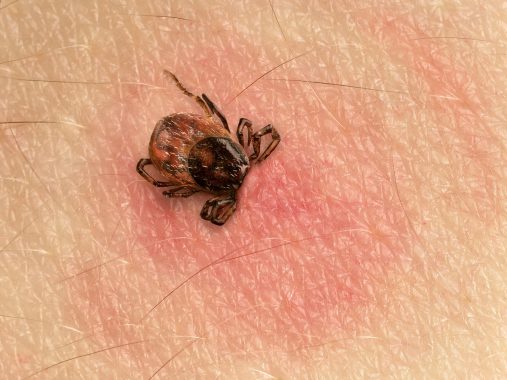Older women in affluent areas particularly at risk of lyme disease, study finds

White women in their sixties who live in affluent, rural areas are the likeliest demographic in England and Wales to contract lyme disease, new research has revealed.
The study, published in the journal BMC Public Health, looked at 2,361 hospital patients between 1998 and 2015. In addition to noting a rise in incidences of the tick-borne disease, with cases peaking each August, higher rates were observed in central, southern and western England.
At present, there are approximately 3,000 annual diagnoses of the bacterial infection, and new cases peaked between between 61 and 65 year-olds, as well as in the six-to-ten age group.
However, biological factors, whether concerning age, gender or ethnicity, are not believed to be responsible. Rather, those living in rural or suburban areas, who thus have easier access to the countryside, are at increased risk of developing lyme disease, which cannot be transferred from person to person.
The study’s author, Dr John Tulloch, said: ‘In the UK, information relating to infected lyme disease patients’ characteristics, where they live and how they are managed within the NHS is not fully understood. Through our analysis of NHS hospital data we were able to identify demographic information about lyme disease patients accessing hospitals for management and treatment and, for the first time, start to describe how they progress through the healthcare system.’
Dr Tulloch, of the NIHR health protection research unit in emerging and zoonotic infections, continued: ‘These data display a predominance of female cases of certain age groups, most of whom identify as white.
‘The reasons for this are hard to explain, but could be related to differences in health seeking behaviour between women and men and an increased exposure to tick habitats due to leisure activities in children and older people, as opposed to occupational exposure in younger adults.’
Public Health England urged potential patients to tell their GP if they have been bitten. Dr Tim Brooks, clinical services director at the Government agency’s rare and imported pathogens laboratory, reiterated that while lyme disease is rare, awareness of its symptoms is important for accessing ‘early diagnosis and treatment from your GP’.
The findings also share that geographical hotspots include the Dorset district of Purbeck and the New Forest in the neighbouring county of Hampshire, aligning to the evidence that lyme disease is more commonly spotted in rural dwellers.
Other research last month, based on 8.4 million UK GP records, disclosed that cases of lyme disease in the UK may be three times higher than expected and could hit 8,000 cases this year.
Around the same time, NICE urged GPs to diagnose and treat the condition on the basis of the characteristic ‘bull’s eye’ rash alone, without the need to wait for test results. This followed advice issued to the medical profession earlier in spring.
Pulse July survey
Take our July 2025 survey to potentially win £1.000 worth of tokens

Visit Pulse Reference for details on 140 symptoms, including easily searchable symptoms and categories, offering you a free platform to check symptoms and receive potential diagnoses during consultations.











